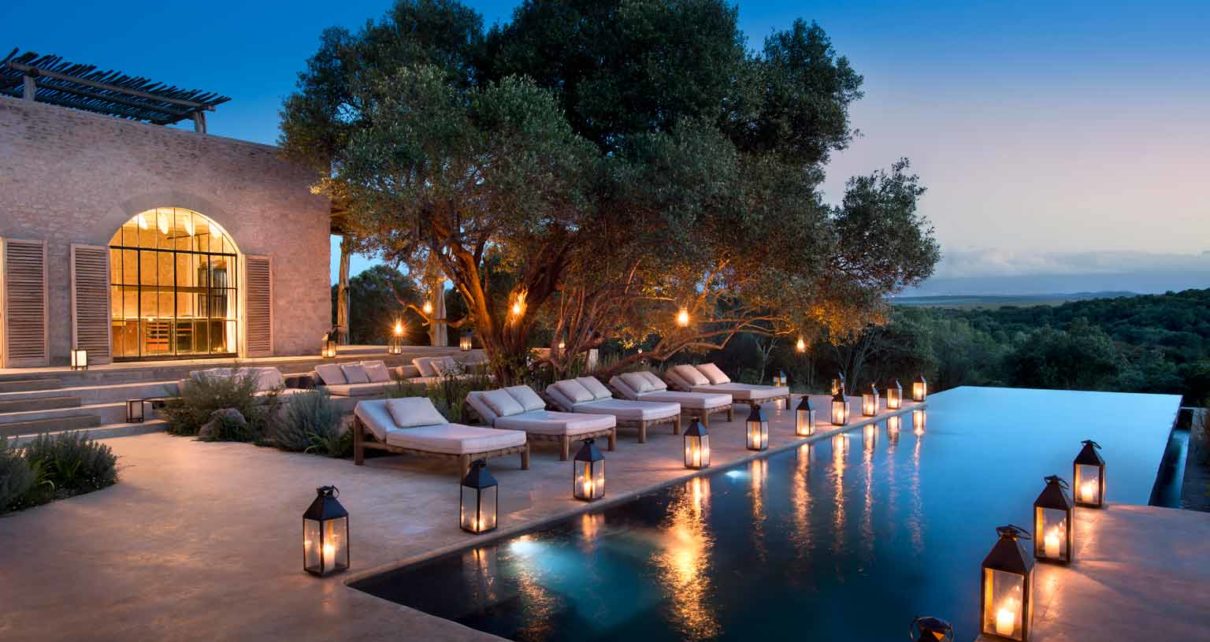Wardrobes and kitchens are made by the company which makes the interiors for Mercedes
By Camy Akinyi-Gecaga
Contributing Editor
Kenyans, mostly those living East of Uhuru highway, couldn’t help talking about the Runda home of city tycoons Peter and Isabella Kubai after daughter, Joan Kubai, excited her online fans with a video tour of their Runda home. For starters, homes in Runda are more or less, like that: with walk-in closets, multiple living rooms, a gazebo, swimming pool, endless wall mirrors and life-size paintings. A carport, another gazebo ‘for cutting goat meat’ and a gym few use are also common fare. And so is a lift although destination is second floor. In fact, the founder of one private Kenyan university has a home with, not a lift, but an elevator!
And there are other features we didn’t see in the family home of Joan Kubai: It had no indoor swimming pool in case it rains when swimming outside. She did not show her fans any panic rooms in case of a nuclear attack. And did anyone see a sauna or steam bath and jakuzzi?
That tells you in Runda, there are more eye-watering, bigger homes and Joan only embarrassed her parents who made their dough in construction, real estate and lucrative tenders. Now they will lose face in front of their billionaire peers for parading a home without a driveway, mature trees and exotic foliage. A home without an in-house chapel to thank the Almighty for such creature comforts. A home without an underground movie theatre, no world class cellar and no aquarium floors. One faceless hotelier sued the government for Sh700 million after demolishing his pad which had among others; a sanatorium. The Kubais have no such facilities in case anyone got sick.
Indeed there are homes in Kenya with superlative aesthetics to the Kubais. Here goes…
- House Number 12 Magnolia Hills
Sitting atop a hill inside the Magnolia Residences in Kitisuru, Nairobi, this six bedroom luxury affair on three floors has one-acre to itself with a large enough compound for 250 guests. Besides a sitting room where you can swing a dinosaur, House Number 12 boasts indoor and outdoor Jacuzzis, swimming pools, spa, gym, two kitchens and a prayer room. There are no burglar bars to obstruct the view of bamboos, mature trees and tropical plants.
The library moves to connect the Living Room. The wardrobes and kitchens are made by the company, which makes the interiors for Mercedes. The marble floors were imported from India. Kenyan architect Mehraz Ehsani, designed it for himself, but decided to put it up for sale: Sh600 million! Besides House Number 12, Ehsani also designed the Village Market and The Tribe Hotel owned by his siblings.
2. Arijiju
Arijiju is a five bedroom private, luxurious sanctuary spread on 97,000 acres inside Borana Sanctuary, Laikipia Plateau where it appears to grow from the ground. The Telegraph termed it Africa’s most beautiful holiday home in Kenya. Borrowing heavily from the rock-hewn churches of Ethiopia and ancient Lamu architecture, Arijiju is partly sculpted on the rock bed overlooking Mt Kenya, its entrance opens into a greened living space with generous Swahili curves carrying a monastic air inside the grassed roofs.
Arijiju, the Maasai name of the hill where it squats, has a games room, cinema, library, infinity pool, five-star spa, yoga pavilion, gym
Designed by British famed architect Alex Michaelis, ideas for its interiors were sourced from internationally-acclaimed Maira Koutsoudakis, who injected touches of rustic African pieces, earthy colours and European furniture in the main shared spaces, including the living room, dining and lounge bar. Over 400 workers labored for almost two years to create the dream of its owner, a half-Nigerian-half English international banker.
Arijiju, the Maasai name of the hill where it squats, has a games room, cinema, library, infinity pool, five-star spa, yoga pavilion, gym, a clay tennis and squash court, helicopter flips, quad bike safaris, rappelling (coiling down rocks), horse riding, game drives. The Kubais only have free guest rooms. But an outsider seeking accommodated at Arijiju will set them back Sh772,500 for six guests, three nights minimum, with Sh61,800 for additional adult guests and Sh30,900 for children aged seven years and above.
3. Shala Heart
This five bedroom Swahili house in Malindi had been abandoned but was bought and redesigned to a fusion of Lamu influences but with nature being the supreme hand that calms the residents including its owner, Luisella Luce Torreforte, a former international development worker turned yoga instructor.
Shala Heart squats on three acres and though, a private residence, its open to the public seeking to “recharge old batteries” barefoot under the makuti roofs.
House Number 44, Muthaiga Road
Formerly owned by crackpot construction magnate, the late Sunil Behal, the architecture of this house now belonging to wheeler-dealer Jimi Wanjigi in Old Muthaiga is largely Oriental complete with pagoda inspired roofing. Jimi lives like a Pasha: Heated swimming pool, a helipad for his Eurocopter and because authorities are always after his neck, there is a bunker for a panic room. There is a Chinese tearoom for his wife and Chinese pavilion for Jimi’s friends. The conference room has a hibachi table where a chef cooks as the meeting goes on. There is certain love for gold and brown down to the inspired lounge.
To suit the house to his tastes, Wanjigi hired US luxury interior designers Perla Lichi and Kenya’s own, Ndani Interiors who turned his Fort Knox into a showpiece of opulence worthy of someone who pulls tenders in the billion tier. But for a piece of mind, the Chinese Feng Shui was employed for nature to harmonize residents with their surroundings.
5. African Heritage House
Borrowing heavily from Malian mud architecture, this three floor home on 10-acres on the Athi Plains overlooking the Nairobi National Park, was inspired by the 600 year old mud mosque in Djenne, Mali where it’s the largest earthen structure in the world.
The most photographed house in Africa, was also the first from Sub-Saharan Africa to feature on the cover of Marie Claire
The flat-roofed African Heritage House was designed by its owner, art collector Alan Donovan, with tips from David Bristow of Triad Architects. It took 12 years to complete with David’s daughter, JoAnna, doing the exterior décor where protruding logs gives it the ‘unfinished look’ completing the form of its earthen façade which belies the stones which were mined from Athi River quarries which were then given a custom made coat finish to blend with the environment. The ceiling poles are mangrove poles from the coast. The pool house extension with palm makuti in Swahili architecture was designed with the help of singer Joy Mboya, also an architect.
The most photographed house in Africa, the first from Sub-Saharan Africa to feature on the cover of Marie Claire, was described by Architectural Digest as “an architecture arising from the serene Kenyan plain like an outcropping of earth, a vision of usefulness informed by the African genius for decoration.” But it almost got demolished as the SGR was to pass right through it. That got Donovan in hospital even as wealthy well-wishers from America requested that they demolish and transport the house piece by piece to the USA! It is also open to the public via a booking.

